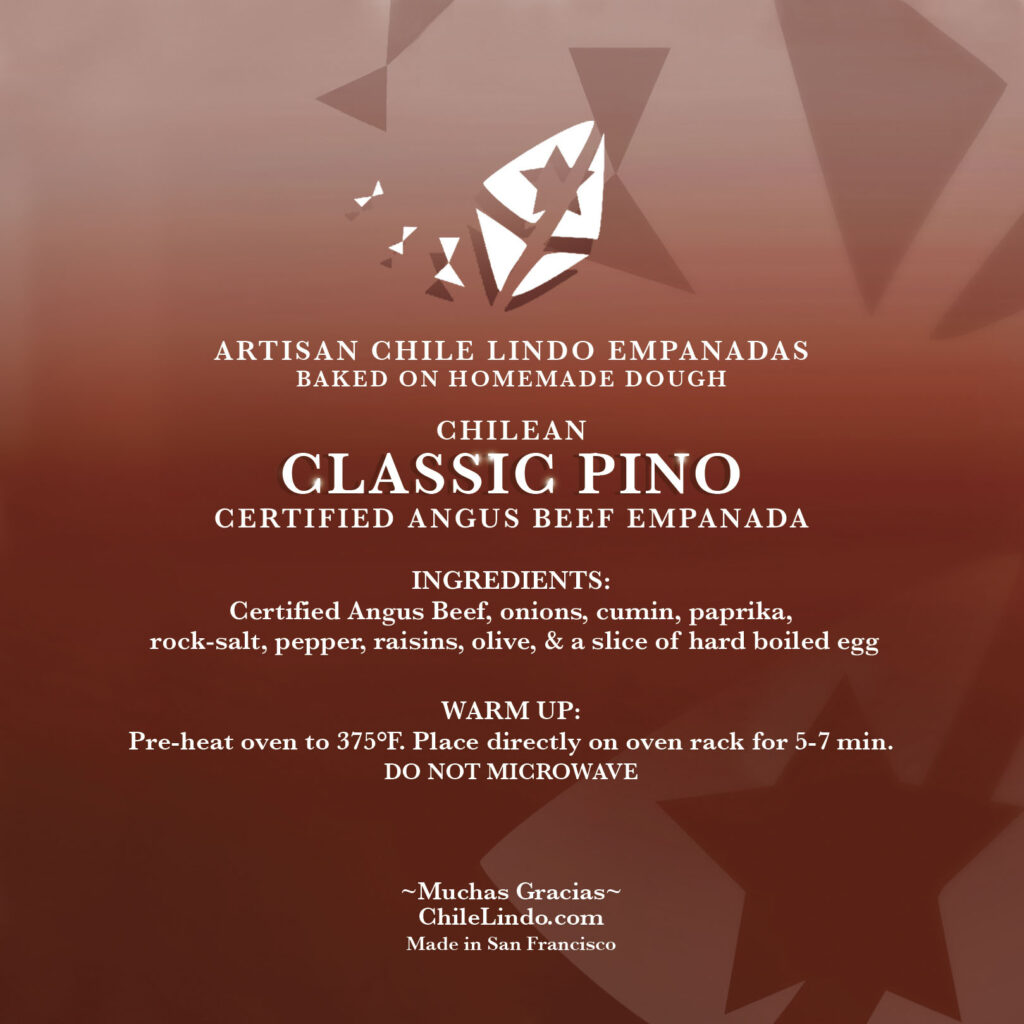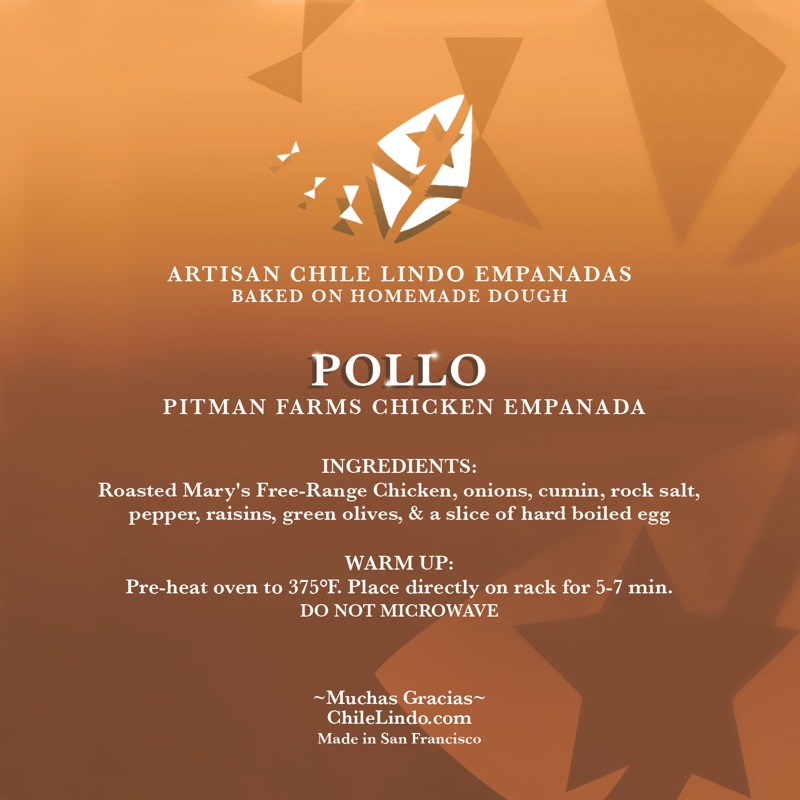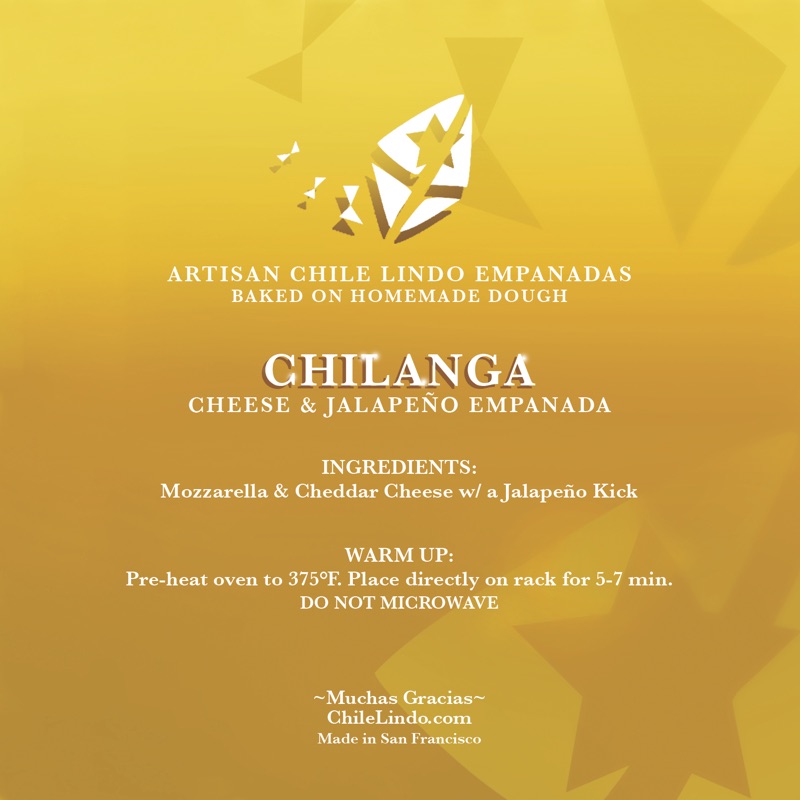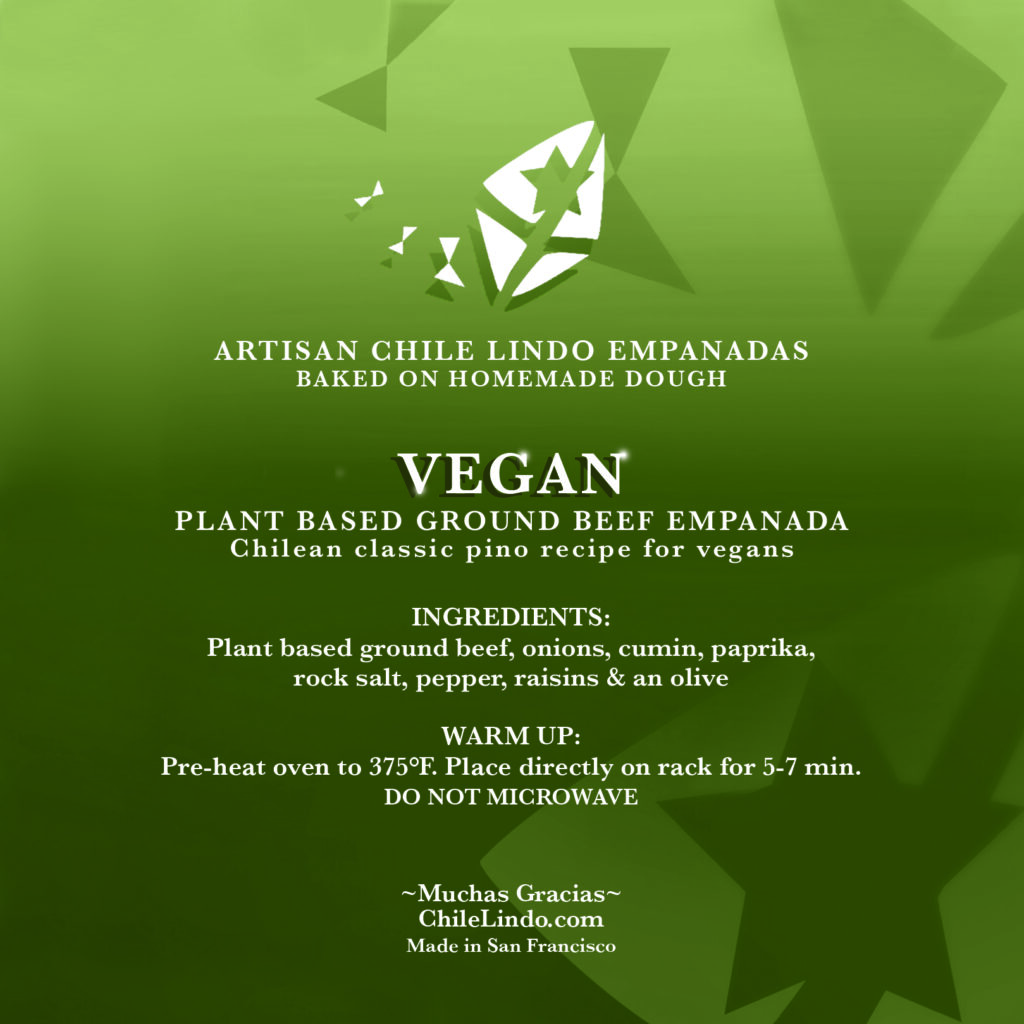Empanadas






Empanadas are a Chilean staple!
Chile Lindo empanadas are baked fresh daily, made with hand kneaded dough & filled with premium ingredients.
Chile Lindo is known for its authentic Chilean empanada—golden baked with a filling called pino that is prepared with certified Angus beef, sautéed onions, paprika, cumin, salt & black pepper— sprinkled with raisins, a black olive, & a slice of hard-boiled egg.
We’ve adapted our empanada fillings for every taste: Mary’s organic chicken, ham & cheese with a jalapeño kick, cheese & jalapeño for vegetarians, & a vegan plant-based recipe created to taste just like the Chile Lindo Classic Pino, no animal products.
At Chile Lindo, vegans & vegetarians get to taste (almost) an authentic Chilean empanada de pino!
Ideal for cocktail parties,the grill, BBQs, camping, or stocking your freezer for a fast & easy dinner!
Cocktail Empanadas
Pre-order cocktail empanadas.
Size: 2 bites l $4.95 ea.

CHILE LINDO EMPANADAS – $8
Our empanadas follow tradition: large, baked, & filled with premium ingredients.
Goooool al Merkén
Made with certified Angus beef, onions, cumin, paprika, salt, pepper, a black olive, a slice of hard-boiled egg, & the distinctive smoky flavor of Chile’s indigenous Mapuche spice: Merkén.
Classic Pino
Made with certified Angus beef, onions, cumin, paprika, salt, pepper, a black olive, & a slice of hard-boiled egg.
Pollo
Roasted Mary’s organic chicken (marinated in rosemary & fresh oregano), onions, cumin, salt, pepper, raisins, sliced green olives, & a slice of hard boiled egg.
Jamón y Queso
Ham, mozzarella & cheddar cheese with a jalapeño kick.
Chilanga
Mozzarella & cheddar cheese with a jalapeño kick.
Vegan
Plant based ground, onions, cumin, paprika, salt, pepper, raisins & a black olive. Chile Lindo Classic Pino recipe for vegans.

A must with empanadas: Pebre
2 oz $ .50 l 14 oz $6
A mild Chilean salsa made with ají (yellow
chili peppers), onions, garlic, tomatoes,
fresh cilantro, bell pepper, salt, olive oil &
lemon.
Preparation
The preparation of an authentic Chilean empanada de pino is
a labor intensive proces that involves 3 separate steps.

- We prepare everything in small batches to ensure quality & authenticity. The empanada filling—known as pino—starts with finely chopped onions, slowly sautéed over a low flame for hours until translucent. Cumin & paprika are then added. Separately, the beef is seared with salt & black pepper to lock in its juices. Finally, the sautéed onions & seared beef are combined & quickly chilled to preserve freshness before assembly.

- Preparing the homemade dough begins with kneading by hand, honoring traditional methods. Once kneaded, the dough is passed through a stretching machine multiple times until it reaches the exact thickness. The dough sheet is cut into precise 10-inch discs, carefully stacked between layers of parchment paper, & refrigerated overnight to ensure a crisp, flaky texture when baked.

- Assembling and folding each empanada is a hands-on process that requires skill & tradition. A measured portion of pino is placed on a 10- inch disc of hand-rolled dough, then a few raisins are added, followed by a black olive & a slice of hard-boiled egg, all carefully encased in the fold.

- Each empanada is folded using various traditional styles—the distinctive folds help identify the different fillings. Finally, a brush of egg wash adds a golden finish, & they’re ready to bake to perfection.

History
Empanadas were introduced in Chile by Spanish colonizers in the 16th century, yet their origins reach further back to the Arab world.
Historians trace their lineage to the fatay, a pastry brought to Spain during the Moors’ 700-year presence on the Iberian Peninsula.
The combination of ingredients commonly found in Chilean empanadas—cumin, raisins, olives, and paprika—reflects this rich cultural exchange.
The word empanada is derived from the Spanish verb empanar, meaning “to wrap in bread” (pan means bread), encapsulating centuries of culinary tradition shaped by migration and adaptation.
The origin of the word pino in the context of Chilean empanadas most likely comes from the Spanish verb “pinar,” meaning to season or to flavor, or possibly from a regional term used to describe a well- seasoned meat mixture.
